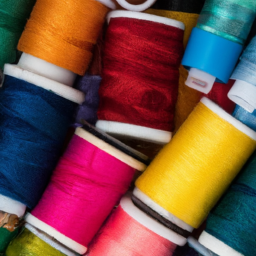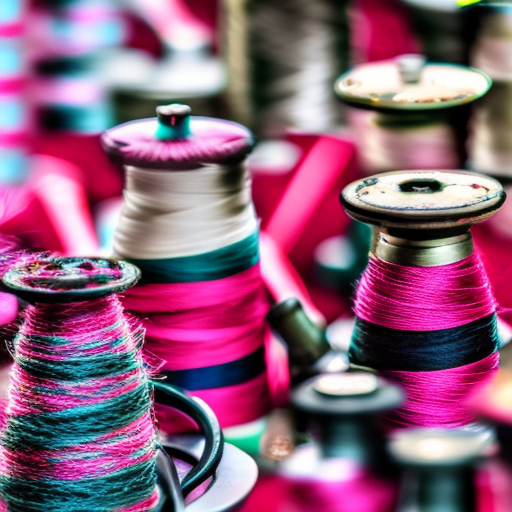
Sewing is a craft that requires precision and patience. However, sometimes even the most experienced sewists encounter an irritating problem known as thread bunching up. This issue can cause frustration and negatively impact the quality of your sewing projects. Understanding the reasons behind thread bunching up on a sewing machine is crucial in order to troubleshoot and resolve the problem effectively.
Possible Causes of Thread Bunching Up
There are several factors that can contribute to thread bunching up during sewing:
-
Tension Issues: Incorrect tension settings are a common culprit. If the upper thread tension is too loose or too tight, it can cause the thread to bunch up underneath the fabric or create uneven stitches. Refer to your sewing machine’s manual and adjust the tension settings accordingly.
-
Incorrect Bobbin Placement: Make sure the bobbin is correctly inserted into the bobbin case. If the bobbin is not properly placed, it may disrupt the thread flow and lead to bunching up. Also, ensure that the bobbin thread is threaded in the correct direction.
-
Dull or Damaged Needle: Using a worn-out or damaged needle can cause thread bunching up. Needles should be replaced regularly to ensure smooth stitching. Additionally, make sure you are using the correct needle type and size for the fabric you are working with.
-
Improper Thread Path: Check that the thread follows the correct path through the tension disks, guides, and thread guides. Misrouting the thread can disrupt its flow and result in thread bunching up.
-
Lint or Dust Build-up: Over time, lint and dust can accumulate in the machine’s bobbin area, causing thread tension problems and thread bunching up. Regularly clean your sewing machine to prevent debris from interfering with the thread’s smooth movement.
Troubleshooting and Fixing the Issue
When thread bunching up occurs, it is essential to follow these troubleshooting steps:
-
Check Tension Settings: Verify that the upper thread tension is correctly adjusted. Experiment with different settings until you achieve the desired stitch quality.
-
Inspect and Replace the Needle: Examine the needle for any signs of wear or damage. If necessary, replace it with a new, suitable needle.
-
Re-thread the Machine: Carefully re-thread both the needle and bobbin threads, ensuring they are properly placed and following the correct thread paths.
-
Clean the Machine: Remove any lint or dust buildup from the bobbin area and other machine parts using a small brush or a vacuum cleaner designed for sewing machines.
By addressing these potential issues, you should be able to resolve the thread bunching up problem and continue your sewing projects smoothly.
Remember, practice and patience are key to mastering the art of sewing. Don’t get discouraged when facing challenges – take them as opportunities to learn and improve your skills.





Maybe the top thread tension is too tight or the needle is the wrong size? That is a great suggestion! It could also be the wrong type of thread or a stuck bobbin, so it might be useful to double-check those as well.
Make sure your needle is the correct type and size for your fabric weight.
This is a great question–it could be a variety of things! It’s always best to double-check the basics like thread, needle, and top thread tension, and then evaluate any other possibilities.
It could be that it’s not a quality thread, you’re using a wrong needle size, or maybe the tension is off. Checking all of those could help you diagnose the issue.
Agreeing with the previous commenters, it could be a variety of problems like thread, needle size, top thread tension, wrong thread type, or a stuck bobbin. It’s always best to check the basics and then review any other possible reasons.
Definitely check the basics first like using the appropriate thread, needle and tension settings. It’s important to ensure those are correct before exploring other possibilities.
Check that you’re using the right needle, thread, and settings to start with, as these can all affect the quality of your stitching. Additionally, if it’s still not working, ensure that your bobbin is not stuck or jammed, as this could also cause bunching of thread.